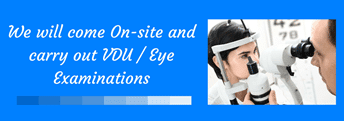
05 Nov Blue Light and the effects on the Eye
Blue Light and the effects on the Eye.
We have known and been advised for years that exposure to UV light is unfavourable for many health reasons, our ocular health being one of the most crucial.
Many people have been advised that wearing UV protected sunglasses while outside will help to reduce the likelihood of cataracts development, macular degeneration, and lesions on the front of the eyes.
Recently have there been significant developments in the research of the harmful effects of blue light to our ocular health.
What is Blue light?
UV light ranges in wavelength in the invisible light spectrum from 200 to 380nm.
Moving closer to the range of the light spectrum is the High Energy Visible Light(HEV)- this is blue light, or ‘near UV’ light, ranging in wavelength
from 380 to 500nm.
Recent studies have shown that exposure to blue light can damage the retinal pigment epithelium at the back of the eye, creating hyper-pigmented lesions that may lead to macular degeneration.
How are we exposed?
This is not an issue our ancestors had to worry about. Blue light is emitted from LED backlight screens and bulbs, such as cool fluorescent lights often used in offices and digital screens. Nowadays the majority of the working population, as well as, children and older people, spend some if not all of their day in front of screens. They are often surrounded by fluorescent lighting also. While the cornea (the anterior structure of the eye) and the lens (behind the cornea) absorb some UV and blue light, this is only partial, meaning the retina (the back surface) requires extra protection, in the form of a UV and blue light filter. This blue light filter is actually a slightly yellow tinted lens and research has shown it offers good visual contrast while also offering the necessary protection from blue light.
Children are most at risk, as having been exposed to less UV, their crystalline lens is very clear, allowing blue light to pass easily through to the retina.
Conversely, while an adults’ lens may absorb more blue light to protect the retina, this absorption can give rise to early cataracts in the lens.
The lighting used to examine the eyes in the practice of ophthalmology and optometry have also been implicated in the degeneration of the retina.
Practitioners are therefore now advised to use a yellow filter in their light sources to reduce the risk of damage.
How can we protect our eyes?
• Where possible, warm white lighting or incandescent lamps are favourable over fluorescent tubes.
• Children, in particular, should spend a limited amount of time in front of VDU screens.
• Where VDU screens are a major component of daily life, spectacle lenses with a UV and blue light filter are recommended.
• Those patients with albinism, coloboma, or aphakia (absence of a crystalline lens), should take extra precautions, wearing UV and blue
filtering lenses the majority of the time.
Opticalrooms in our clinics, we are one of the first practitioners to offer UV and blue light filtering lenses to our patients, most notably those in office environments in front of a VDU screen. It is important to remember that even those patients who do not need glasses to correct their vision will benefit long term from these lenses, aimed at preserving ocular health for the future.
Feel free to contact us here through the comment section or call us on 01 8089013.

VDU Assessments offered Onsite